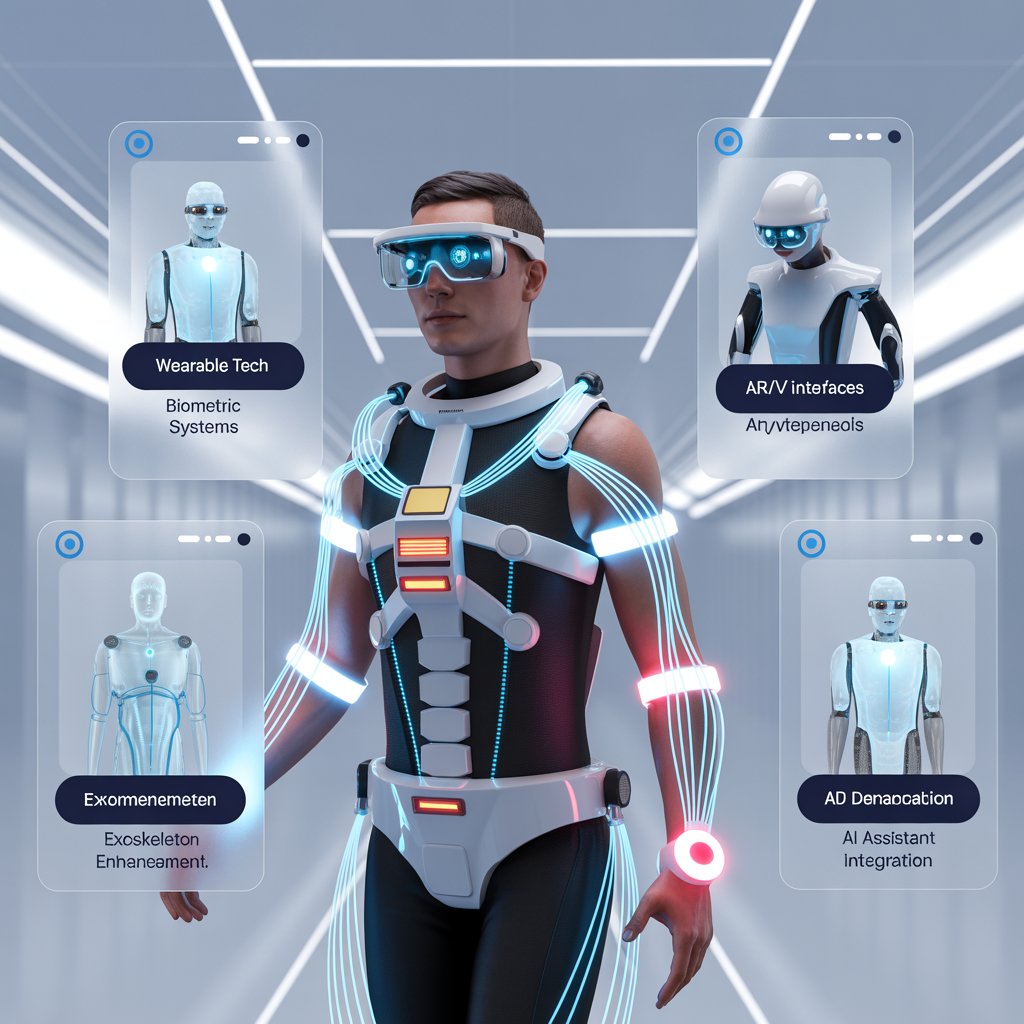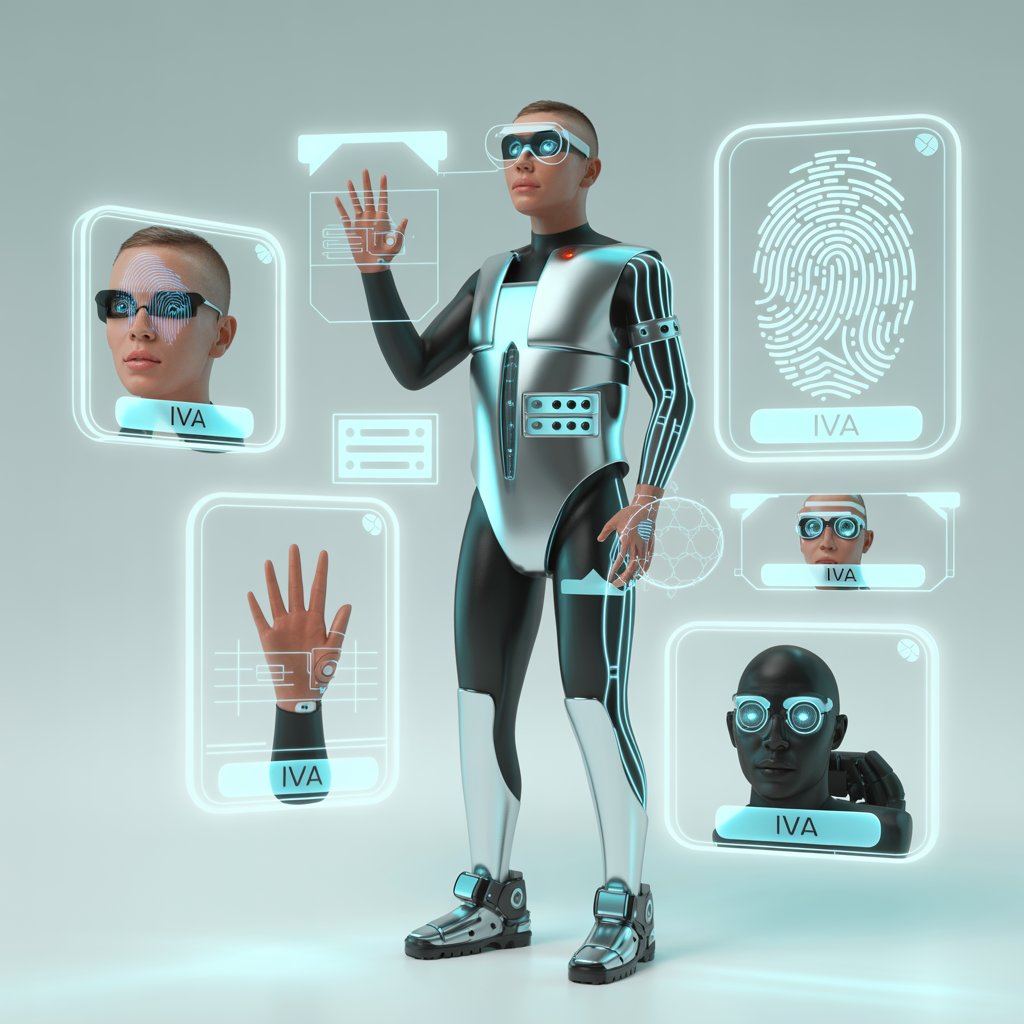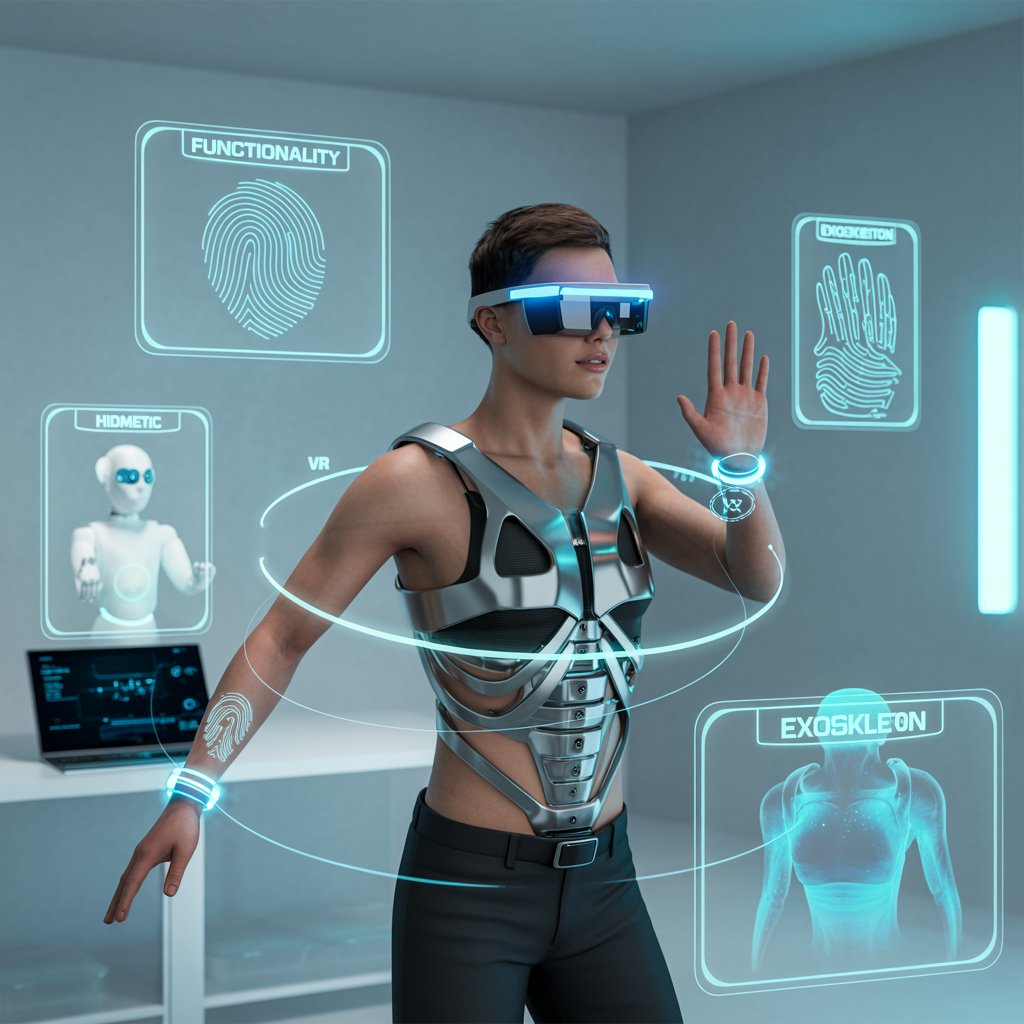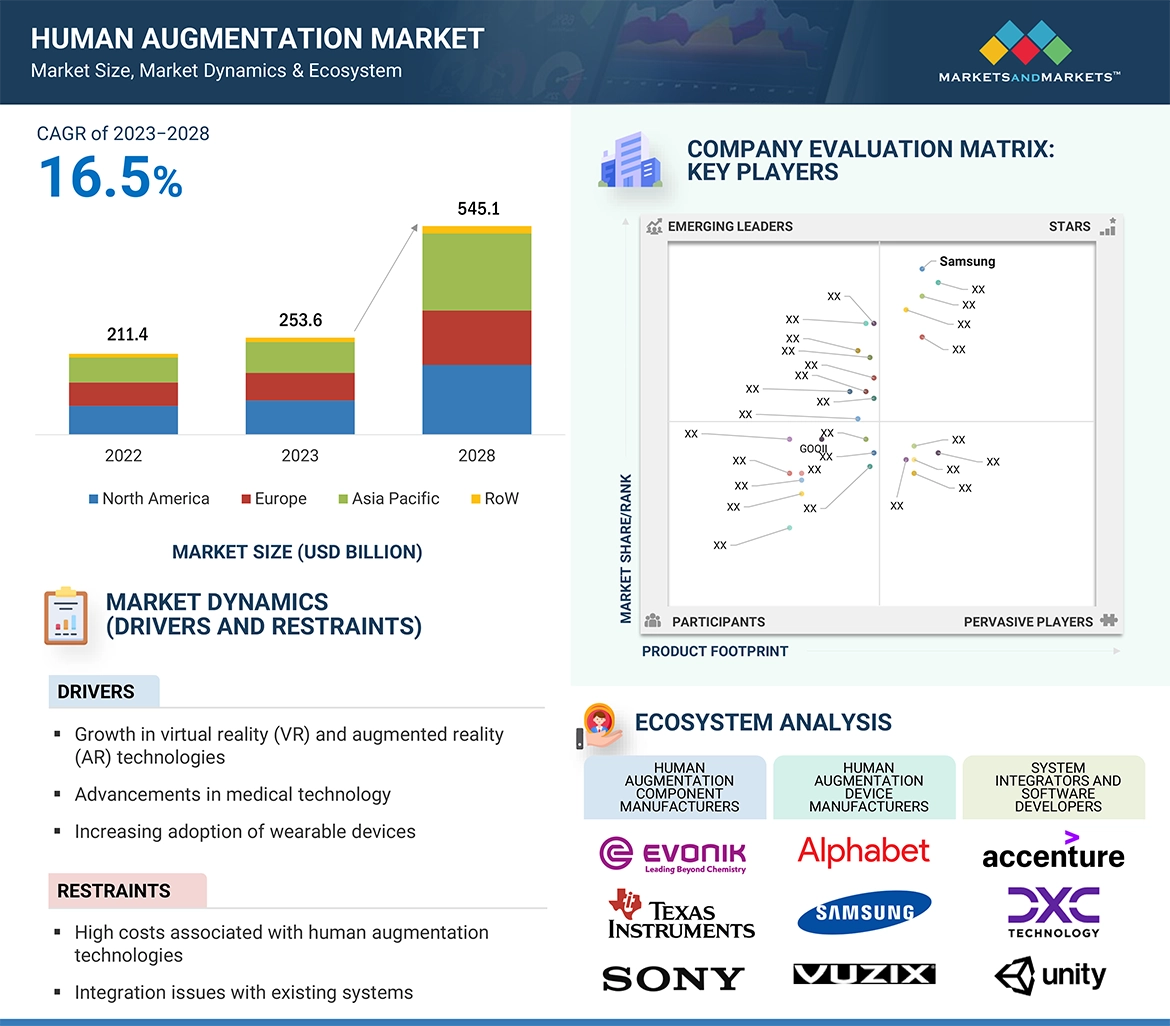The Human Augmentation Market is undergoing a major transformation as emerging technologies once seen as science fiction progress into commercial applications across medical, industrial, military, and consumer sectors. What began as a theoretical exploration of enhancing human abilities through technology has now evolved into a rapidly expanding global ecosystem driven by innovation in artificial intelligence, robotics, biotechnology, wearables, and neural engineering. This shift marks a critical turning point where augmentation is no longer defined by hypothetical potential but by measurable commercial deployment and tangible user outcomes.
Initially, the concept of human augmentation was confined to research laboratories and defense programs focused on enhancing physical strength, sensory perception, and cognitive function. Early prototypes such as robotic prosthetics, brain–machine interfaces, and powered exoskeletons demonstrated the possibility of merging biological systems with technology, but remained limited by cost, scalability, and technological maturity. Over time, advancements in miniaturization, machine learning, and materials science significantly accelerated development cycles, paving the way for scalable and commercially viable augmentation solutions.
Download PDF Brochure @ https://www.marketsandmarkets.com/pdfdownloadNew.asp?id=177215310

Medical applications have played a central role in transitioning augmentation from concept to reality. Prosthetics equipped with neural interfacing, tactile feedback, and real-time motion sensing now allow amputees to achieve near-natural limb control. Implantable devices such as cochlear implants, retinal prosthetics, and deep brain stimulators have transformed the treatment landscape for sensory loss, neurological disorders, and chronic pain. These developments have moved augmentation beyond restoring lost function to improving quality of life through personalized and adaptive enhancement.
Parallel to medical advancement, wearable technology has served as a gateway to mainstream adoption. Devices such as smartwatches, biometric monitoring systems, and augmented reality glasses have familiarized millions of users with continuous digital augmentation integrated into everyday life. This transition demonstrates how augmentation can evolve through incremental improvements—from simple tracking functionality to real-time cognitive and physiological enhancement powered by AI-based predictive analytics and cloud connectivity.
Inquiry Before Buying @ https://www.marketsandmarkets.com/Enquiry_Before_BuyingNew.asp?id=177215310

The industrial and defense sectors have further accelerated commercialization by integrating augmentation solutions for operational performance and safety optimization. Powered exoskeletons are now deployed in logistics, manufacturing, and construction environments to reduce workplace injuries and enhance physical endurance. Military programs are investing heavily in enhanced situational awareness systems, cognitive optimization tools, and injury recovery implants. These applications highlight how augmentation technologies are moving from experimental concepts to mission-critical assets that enhance productivity and resilience.
As commercialization expands, the market is experiencing significant investment growth from venture capital firms, government initiatives, technology companies, and medical device manufacturers. Strategic partnerships between research organizations, startups, and established corporations are accelerating product refinement, regulatory approval, and deployment. This collaborative innovation framework is essential in scaling augmentation from small research pilots to mass-market platforms.
However, the market’s transition is also shaped by ethical, regulatory, and societal considerations. Questions surrounding user privacy, long-term effects of implants, psychological impacts of enhancement, and the potential divide between augmented and non-augmented populations are becoming central to global policy discussions. Regulatory bodies are now developing frameworks for safety validation, compliance, and responsible access to ensure augmentation technologies are both effective and ethically deployed.
View detailed Table of Content here – https://www.marketsandmarkets.com/Market-Reports/human-augmentation-market-177215310.html

Looking ahead, the future of human augmentation will be defined by personalization, interoperability, and seamless integration between biological and digital systems. As technologies mature, augmentation will increasingly shift from external tools to embedded, adaptive, and autonomous enhancement ecosystems. Brain–computer interfaces, genetic augmentation pathways, bio-hybrid robotics, and AI-powered cognition systems may soon move beyond early adoption groups into broader commercial markets.
The transformation of the human augmentation market reflects a broader shift in how society perceives human capability, technological enhancement, and the future of human potential. From early conceptual exploration to genuine commercial deployment, augmentation is evolving into a defining pillar of next-generation innovation. As adoption expands and solutions become more accessible, the market’s future trajectory points toward a world where enhancement is not the exception—but a natural extension of human progress.

